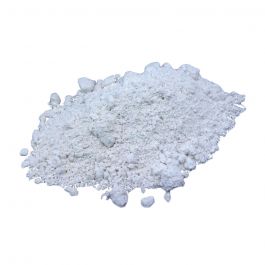- Language
- 🇺🇸
- Joined
- Mar 1, 2024
- Messages
- 338
- Reaction score
- 464
- Points
- 63
kas alumiinium ei teeks seda kahtlasemaks? siis on selle omamoodi ilmne, et sa varjad midagi. aga ma ei tea, ma pole kunagi varem narkootikume välja postitanud.
- Language
- 🇬🇧
- Joined
- Jan 19, 2024
- Messages
- 45
- Reaction score
- 31
- Points
- 18
Paljud inimesed ütlevad, et alumiinium aitab blokeerida röntgenkiirgust, kuid ma arvan, et see on müüt
Plii aitab blokeerida röntgenkiirgust tänu oma tihedusele 11400kg/m³, kuid alumiiniumil on ainult 2700kg/m³, nii et ma arvan, et see on kasutu.
lihtsalt hea mähise jaoks, et mähkida narkootikumi
Plii aitab blokeerida röntgenkiirgust tänu oma tihedusele 11400kg/m³, kuid alumiiniumil on ainult 2700kg/m³, nii et ma arvan, et see on kasutu.
lihtsalt hea mähise jaoks, et mähkida narkootikumi
↑View previous replies…
- Language
- 🇺🇸
- Joined
- Jan 23, 2024
- Messages
- 112
- Reaction score
- 39
- Points
- 28
- Deals
- 12
jama! alumiiniumfoolium ei blokeeri röntgenkiirgust.
teie dote on hunnik orgaanilisi molekule. orgaaniline näeb röntgenil välja teisiti kui metall ja on eristatav.
kui sa tahad röntgenkiirgust blokeerida, pead sa oma dope uputama sarnasesse orgaanilisse enveronmenti, et see näeks välja nagu midagi süütut. aga siinkohal ma lõpetan, sest ma ei taha oma salamismeetodeid avalikustada.
teie dote on hunnik orgaanilisi molekule. orgaaniline näeb röntgenil välja teisiti kui metall ja on eristatav.
kui sa tahad röntgenkiirgust blokeerida, pead sa oma dope uputama sarnasesse orgaanilisse enveronmenti, et see näeks välja nagu midagi süütut. aga siinkohal ma lõpetan, sest ma ei taha oma salamismeetodeid avalikustada.
- Language
- 🇺🇸
- Joined
- May 8, 2024
- Messages
- 43
- Reaction score
- 9
- Points
- 8
Theoretically aluminum can shield against electromagnetic waves, also x-ray.
But the thin layers used mostly are not enough.
There are different ways through which a material can block electromagnetic waves.
Scattering and absorption which often happens in high density, but it also works through the conductivity of a metal, and aluminum and copper for example have a good conductivity, and this allows them to absorb energy from the electromagnetic radiation pretty well, because of their free electrons.
But you would need a thick layer of aluminum, the normal foil is not going to do that well-
But the thin layers used mostly are not enough.
There are different ways through which a material can block electromagnetic waves.
Scattering and absorption which often happens in high density, but it also works through the conductivity of a metal, and aluminum and copper for example have a good conductivity, and this allows them to absorb energy from the electromagnetic radiation pretty well, because of their free electrons.
But you would need a thick layer of aluminum, the normal foil is not going to do that well-
- Language
- 🇺🇸
- Joined
- May 8, 2024
- Messages
- 43
- Reaction score
- 9
- Points
- 8
Also the shielding ability of aluminum is better (lot better) at lower frequencies, and thickness would need to be increased a lot to shield effectively against x-rays. Also at such high frequencies like x-ray denser materials with high Z are normally required because they have a higher probability of interacting with high energy electromagnetic waves, but theoretically every conductor can block them t some point, also aluminum, but you need a very thick layer which is not practical.

